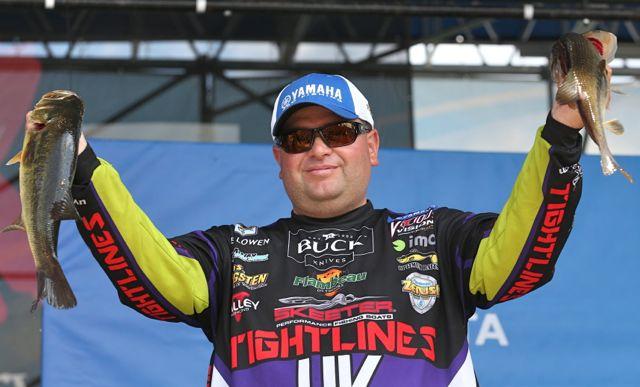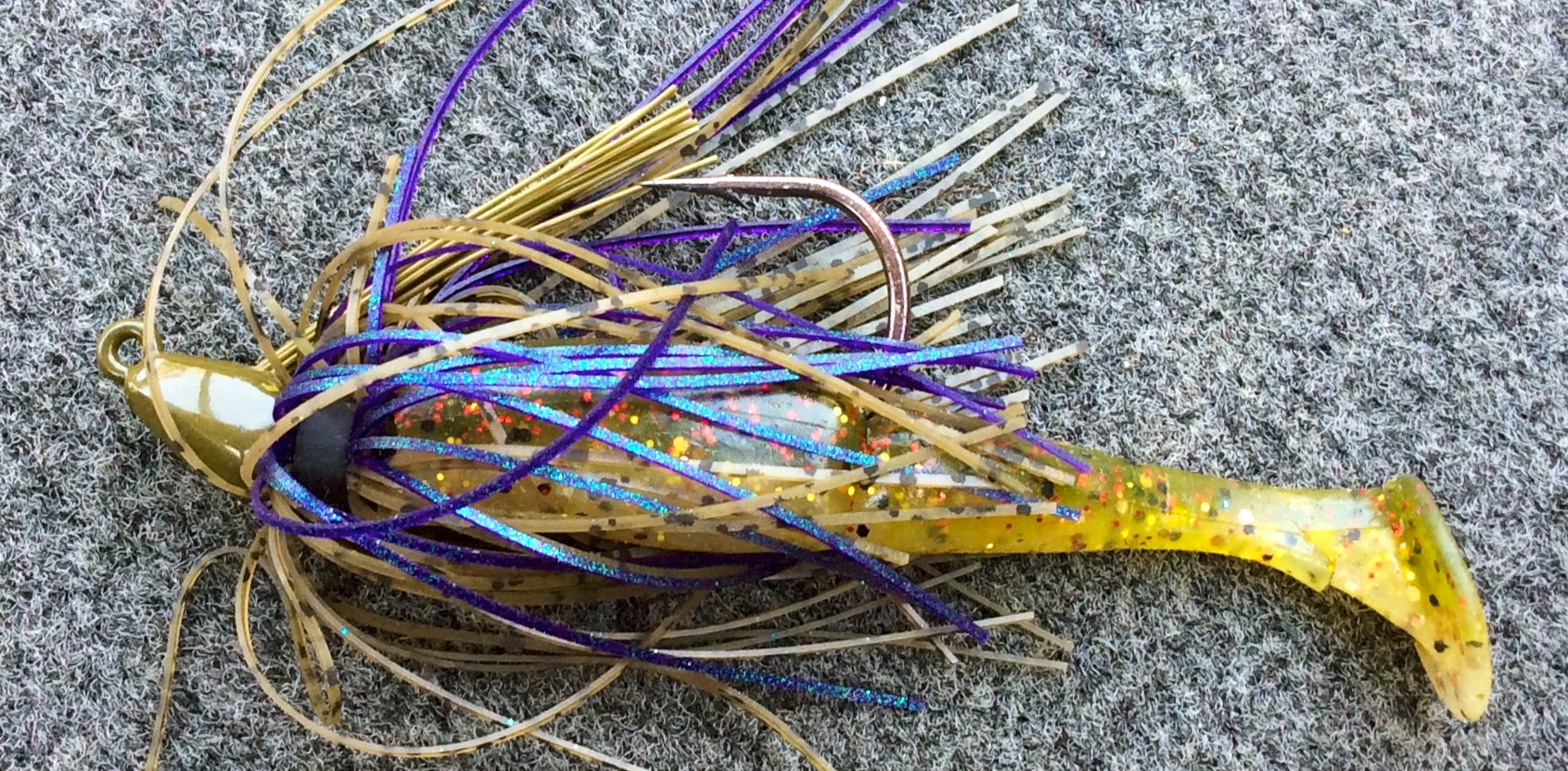Double duty: Swim jigs for smallies and largemouths
The jig and the swimbait had a baby… and it’s a lethal (and easy to use) bait
Advertisement
Even at 4:30 a.m., it’s so hot and humid that I’m already dripping with sweat when I hop into Bassmaster Elite angler Bill Lowen’s boat on the Mississippi River, just outside of LaCrosse, Wisconsin. Because of our busy schedules and the distance between our respective homes, I’ve waited years for this day. Why? Among his peers, Lowen is regarded as the best swim jig bass angler on the planet, and the Mississippi is known as swim jig central.
“I feel right at home now,” he says, opening one of his many swim jig boxes and rigging up one of the 14 rods lying on the boat’s deck. As he goes to work, I ask Lowen when he first encountered the swim jig technique.
Advertisement
“I grew up fishing the tough Ohio River, where it’s a good day if you get four bites,” he says. “I was fishing a skirted jig-and-pig and reeling it in fast to make another flip, when a nice largemouth grabbed my lure. I thought it was a fluke, but then it happened again.”
An accidental discovery
With that, Lowen started swimming the jig intentionally and continued to catch fish. He also discovered he could cover more water—and cover it better—in 10 minutes, than any other two anglers could in 30. Not only that, he soon discovered the swim bait is also deadly on smallmouth bass.
Advertisement
Since that day on the Ohio, Lowen and two or three other professional anglers have gone on to popularize the technique for bass. He’s even worked with D&L Tackle to design a signature series jig with a hydrodynamic head, silicone skirt and stout hook specifically designed for swimming. Almost every other tackle manufacturer has since followed suit.
“The thing about a swim jig,” Lowen says, “is that when you’ve got the right combination of jig weight, trailer and retrieve speed, it’s like you’re the best bass angler in the world.”
Advertisement

Bass pro Bill Lowen credits swim jigs for his podium visits.
Part of that magic combination is keeping things simple. Lowen fishes 1/4-ounce and 3/8-ounce swim jigs 90 per cent of the time, favouring the lighter jigs whenever he can throw them. And he sticks primarily to three colour combinations: black, blue and purple when the water is dirty; white and chartreuse when the bass are feeding on shad; and green pumpkin with a hint of orange when they’re eating bluegills.
The soft-plastic grubs, chunks or beaver-style dressings Lowen then attaches under the swim jig skirts complement the colours. He recommends experimenting with single- and double-tail trailers to figure out how much vibration the fish want.
Our first stop on the Mississippi is a massive bay off the main river, covered with duckweed. It looks like a place made for fishing a frog, yet Lowen makes short, accurate casts with his jig, swimming it down open lanes using a 7½-foot baitcasting rod with a light tip and flippin’ stick frame. His high-speed 7:1 ratio reel is spooled with the only line he ever uses—30-pound-test braid—and he never attaches a monofilament or fluorocarbon leader, calling it “a weak link in the puzzle.”
He likes it dirty
As I look into the scuzzy water, it’s as though Lowen can read my mind: I thought you needed clear water to swim jigs. “I like it dirty because it screws with the other guys’ minds,” the personable pro says with a chuckle. “It used to bother me, but not any more. The fish still have to eat. The muddier it gets, the shallower you need to go.”
Now, as surprised as I am by the way Lowen fishes swim jigs in muddy water, you could have picked me up off the boat deck when we leave the weedy largemouth bay and move out into the main river. There, he uses the same jig for smallmouth relating to the wing dams. “You can throw a swim jig whenever and wherever you’d throw a spinnerbait or chatterbait,” he says. “It’s just a more subtle presentation.”
Casting it out and reeling it back in is certainly the standard practice, but the swim jig is so versatile you can add little pauses and twitches, slow roll it close to the bottom, or bulge it fast just under the surface.With that, Lowen swims his jig over rocks lying just inches beneath the surface and slams one monstrous smallmouth after another—and turns me into a true swim jig convert in the process.

